“A big tamarisk can suck 73,000 gallons of river water a year. For $2.88 a day, plus water bounty, Lolo rips tamarisk all winter long.
“Ten years ago, it was a good living. Back then, tamarisk shouldered up against every riverbank in the Colorado River Basin, along with cottonwoods, Russian olives, and elms. Ten years ago, towns like Grand Junction and Moab thought they could still squeeze life from a river.”
— The Tamarisk Hunter, from Pump Six and Other Stories by Paolo Bacigalupi
 |
Blackout (All Clear # 1) Connie Willis The concept behind Blackout is compellingly interesting: time-traveling Oxford historians from the year 2060 are assigned to explore different aspects of wartime English life in 1940. One is sent to study the evacuation of children to northern England; one to work as a shopgirl in downtown London during the blitz; one to pose as an American reporter while observing the evacuation of British soldiers from Dunkirk. At some point one of them (or possibly another historian working a different assignment) does something to influence history and thereby alter the future, and the three historians find themselves stranded in 1940, unable to travel back to their own time. In their desperation the three historians converge on London to find each other, just as the Battle of Britain reaches its peak and bombs begin falling on the city every night. Huddling in a tube station during a bombing attack, they compare notes and begin to realize the scope of their shared predicament. At this point the book ends, setting the stage for the second volume, All Clear. Great concept, great hook. The problem is, it’s a dreadful read. Connie Willis’ characters, two women and one man, are interchangeable units. They talk the same, act the same, have the same thoughts. The short chapters, which alternate between the experiences and thoughts of the three historians as they go about their assignments, all read the same. One by one, each attempts to return to 2060 through his or her designated portal. One by one, they discover the portals are no longer there. One by one, they agonize over when and where recovery teams from the future will find them. One by one, they become ever more frantic, running back and forth across the English countryside or the streets of central London, trying to be in the right place at the right time. Every chapter, regardless of which character it’s about, reads the same. Every chapter ends in a minor or major cliffhanger as one or another historian is frustrated yet again. Every chapter, from page 100 to page 400 … fully three quarters of the book … is cut from the same cloth. Each historian’s assignment is intrinsically interesting. We learn about the evacuation of London’s children: how they were transported, housed, clothed, and fed. We learn about the bombing of London during the blitz and what life was like for city dwellers as they sought shelter every night in the tubes. We learn about the coastal villagers and fishermen who organized the sea-lift that rescued British troops stranded at Dunkirk. We learn about the state of medicine in 1940; what doctors could treat and what they couldn’t. But the interesting stuff is buried under the repetitive mental agonies and frustrations of the historians, who keep rehashing the same problems over and over, and the result is that the story advances one agonizing inch at a time. When the character Mike asks himself, for the fifteenth time, whether rescuing a soldier at Dunkirk might have altered the outcome of the war, I almost threw the book across the room … and I was only halfway through. Reading Blackout was a bit like having a toothache, and I’m not anxious to repeat the experience, Part # 2 or no Part # 2. |
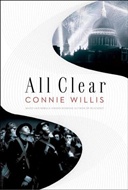 |
All Clear (All Clear # 2) Connie Willis See my review for Blackout, above. I was not going to read the second volume of this time travel story, for all the reasons I listed in my review of the first volume. But there at the local library was a fresh copy of All Clear, and I thought maybe the second half of the story would be a little tighter, that maybe some of the silly cliffhangers from the first volume would be resolved. No, it was just more of the same endless dithering, with Polly and Eileen and Mike worrying about how their presence in England during the Second World War might have affected the future, and worrying, and worrying … I soon found myself paging quickly through chapters, looking for new developments and resolutions. The rewards were scanty. Connie Willis, at the end, finally gets around to addressing the theoretical paradoxes of time travel, but she’s not on to anything new. It’s all been done, and done more straightforwardly, by science fiction authors who came before her. The entire two-volume Connie Willis time travel epic, had it been written by Brian Aldiss or Poul Anderson, would have been a single 250-300 page novel … and a far more exciting read. |
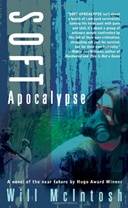 |
Soft Apocalypse Will McIntosh An end-of-the-world-as-we-know it story in the spirit of Margaret Atwood’s Oryx & Crake and The Year of the Flood. We follow a small cast of characters who throw their lot together in a post-financial-collapse USA, sometime in the 2030s. Unemployment is over 50%; when we first meet this group of young, educated, professional but currently unemployed men and women, they’re part of a nomadic commune wandering around the American south, sleeping in tents and moving from neighborhood to neighborhood by day, bartering and working odd jobs for food. Later a few of them find entry-level jobs in Savannah and go in together on rent, enjoying a year or two or relative stability. Later still the collapse becomes worse and the small group are nomads again, now joined by other men and women in open revolt against society and the government. And then it gets worse. What makes Soft Apocalypse readable, even engaging, is the same thing that makes Margaret Atwood’s post-apocalyptic novels so readable: fully-developed characters you come to like, even love. And as with Atwood, startling and shocking bits of information about the post-collapse world are introduced here and there, almost as background noise. We learn, early on, that Jasper’s parents were killed in Arizona in the water riots of the early 20s. We discover that civil authority and government are now in the hand of corrupt private militias. In another Atwood echo, engineered viruses and plants are wreaking havoc across the land. Given current realities, it’s all quite believable. If you loved Oryx & Crake, you will certainly enjoy reading Soft Apocalypse. I did, and I’ll definitely read more by Will McIntosh. |
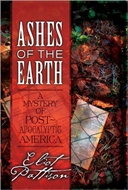 |
Ashes of the Earth: A Mystery of Post-Apocalyptic America Eliot Pattison I suspect the publishers and booksellers have discovered, thanks to the success of writers like Margaret Atwood, that there’s an eager audience for post-apocalyptic science fiction, and that we’ll see more and more books aimed at this market. I thought this might be a riff on the classic A Canticle for Leibowitz, and in some ways it is. The major difference is it’s not nearly as good, of course; another major difference is that the events in the story occur just 30 or so years after the end of civilization, so the older characters remember the past well enough to know what’s useful to salvage from the wastelands. The story unfolds in a village of survivors and their descendents. Politics are repressive in a Salem witch hunt way (the village council has evicted the sick and lame, leaving them to starve in the woods), and murders, drugs, and mysterious strangers have suddenly appeared. One man, Hadrian Boone, first generation survivor and village drunk, sets out to discover what’s going on. Eliot Pattison’s evocation of a destroyed world — the works of man scattered and buried, nature reclaiming the land, small pockets of survivors existing hand to mouth — is pretty well done. It’s plausible. It’s rendered vividly enough that the reader can feel it and want to know more. After setting the scene, though, Pattison concentrates on the mystery, dragging it out to such an extent that reading this book becomes a chore. Hadrian advances in half steps with frequent setbacks. Previously unknown actors pop up every chapter or so, adding layers and layers to the problem. You figure out early on that bad people are scheming to steal the village’s surplus grain, and in the end that is exactly what has transpired, complicated needlessly by Pattison’s extra wrinkles. This could have been a tighter story, and I wish it had been. All in all, though, pretty good. |
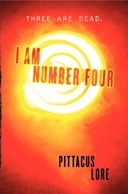 |
I Am Number Four Pittacus Lore Another rarity where the movie (reviewed here) is better than the book that inspired it. See the movie by all means. The book? Skip it. It’s a cheesy attempt to cash in on the Twilight phenomenon and the suddenly huge market in teen romance with a fantasy/sci-fi/horror twist. The story starts out okay — the alien motif is as inherently interesting as the vampire motif — but when John begins to develop his Lorien legacies, it turns into a superhero comic book. I have a deep disdain for authors who give their characters telekinetic powers, and this author doesn’t stint in that department. The bad guys do impossible things. John does impossible things. John’s human high school friends do impossible things. John’s dog does impossible things. The plot degenerates into a bunch of impossible bullshit, and, if you’re like me, you’ll start flipping pages just to get the damn book over with. On second thought, don’t see the movie either. They just want your teen money, kids. |
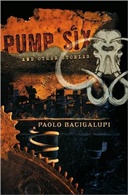 |
Pump Six and Other Stories Paolo Bacigalupi My first reaction to reading Bacigalupi’s short stories was the same one I had upon discovering Gene Wolfe when he first appeared on the science fiction scene: gobsmacked to realize sci-fi could be both amazing and amazingly good. I think we have our next Gene Wolfe. If you have read Bacigalupi’s later novels, Ship Breaker and The Windup Girl, you’ll find most of the stories in this early collection revelatory. The story behind the Yellow Card Chinese refugees of Bangkok is here, spelled out in riveting, personal detail. So too the windup girl, AgriGen and PurCal, the calorie men, the megadonts and cheshire cats, post-drought water management, kink springs, clipper ships, and so many other themes of Bacigalupi’s later work. Essential background, even if you learn it after you’ve already read the later novels, as I did. As with the later novels, these aren’t merely stories of ideas and imagination — these are human stories, with fully realized characters. All the stories in this collection are great fun to read, and you’ll marvel at the quality of Bacigalupi’s vision and writing skill throughout. |